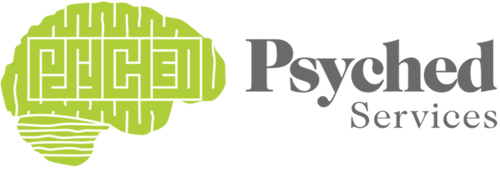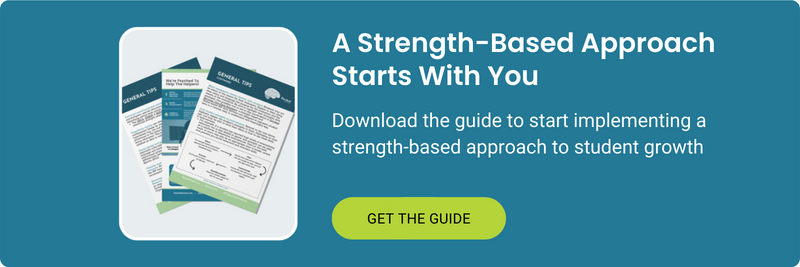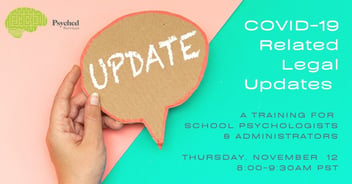
As many one in five people — male and female alike — have the learning disorder dyslexia, says the Yale Center for Dyslexia & Creativity. The implications are staggering. Research shows that people who struggle with reading, a hallmark trait of dyslexia, are more likely drop out of school or become incarcerated. In elementary school, they may have difficulty making friends, concentrating on school work, or regulating emotion.
The good news is that early identification and treatment is highly effective. The bad news is that many California children with dyslexia have gone unidentified. In the past, even if a school district suspected dyslexia, there was tremendous confusion regarding legal requirements and best practice assessment. That all changed with the passage of Assembly Bill 1369. Now, because of requirements laid out in the bill, school districts have the California Dyslexia Guidelines to help guide the way. This article is the first in a series designed to help districts navigate the guidelines and, ultimately, better support students with dyslexia.
CDE Dyslexia Guidelines
The California Dyslexia Guidelines outline several principles regarding educating students with dyslexia. These include:
- Students with dyslexia need an active support system that includes families, educators, and other professionals.
- Similar to other learning disabilities, support systems must be diverse and personalized to meet the individual learner’s needs.
- An integrated and tiered system should exist to support a student with dyslexia.
- Students with dyslexia are “general education students” first.
- There should be an interdisciplinary approach that takes advantage of every team member’s unique skills.
- Programs that are evidence-based must anchor educational strategies for students with dyslexia.
What Can We Do?
Early identification and treatment is key to helping students with dyslexia achieve success in school and beyond. Per the CDE guidelines, we offer recommendations for an integrated and tiered system similar to those offered in an RTI or MTSS framework.
Tier 1 Supports
At the Tier 1 level, the student’s socioeconomic status, as well as other extrinsic factors, should be considered when exploring reading challenges. Since time spent reading after school makes an incredible difference in capabilities, a student’s reading can be improved with an enriched home literacy environment. In one study, children who did not read at home were exposed to only 8,000 words per year, compared with 1.8 million for those who read at least 20 minutes a day outside of school. Schools can attempt to address these issues through a variety of approaches, including parent education, book drives, literacy-based after-school programs, book clubs, library assistance, and more.
While it’s important to address barriers to reading before assuming a child is struggling with dyslexia, it is also important to screen for traits of the disorder. These include (but are not limited to): poor spelling, difficulty sounding out new words, limited sight-word vocabulary, poor word retention, and stronger listening comprehension skills when compared with reading comprehension.
Schools can build awareness by providing educators with professional development and trainings on dyslexia (see Chapter 8 of the CDE guidelines). If dyslexia is suspected, general education teachers can then screen and make informed decisions regarding intervention and support planning. Here are a few evidenced-based screeners:
- Shaywitz Dyslexia Screener
- Dibels
- Orton Gillingham Quest Screener
- Education Software for Guiding Instruction
Since students with dyslexia are considered general education students first, they benefit from additional support provided within their regular classroom. Recommendations include:
- Lexia Reading
- Raz Kids
- Wilson Reading Tier 1 Fundations
- Jennifer Serravallo Assess-Evaluate-Teach System
- Fountas & Pinnell Leveled Literacy Instruction
- Fast Forward Reading Intervention
Tier 2 Supports
If a student has been identified with moderate to high-risk characteristics of dyslexia (based on screenings, teacher observations, and other classroom based assessments), Tier 2 supports should be implemented. Research has shown that daily small group instruction (with one to five students) is more effective than sporadic instruction. Intervention is most effective when provided for at least 30 minutes per day, four days per week. In addition, educators should monitor progress at regular intervals to determine if gains are happening at the expected pace. Here are some Tier 2 interventions:
- Read Naturally
- Great Leaps Reading Program
- Read, Write, Type
- Wilson Reading Just Words & Fundations
- Barton Reading Program
In addition, assistive technology helps students compensate so they can keep up with the pace of grade-level instruction:
- Learning Ally Audio Books
- Bookshare
- Speech-to-Text Dictation such as Dragon Naturally Speaking
- Note taking supports such as LiveScribe Pen
At this point, the general education teacher will probably need the support of other professionals. Credentialed reading specialists, speech-language pathologists, and special education teachers each have the training and experience needed to best serve students with dyslexia.
Tier 3 Supports
If small-group intervention doesn’t yield the results educators were hoping for, it’s time to consult with special educators. The school team, in collaboration with parents, should determine next steps for assessment. Dyslexia can be identified through research-based screeners (as noted earlier), or through a comprehensive evaluation for special education eligibility. The team should decide which route to take based on the severity of symptoms. Mild weaknesses may indicate the need to implement 504 supports, while more severe traits may signal the need for a special education evaluation.
The next article in our series will offer more information about referrals for special education and Tier 3 support, but it’s important to note here that the CDE guidelines state, “when a student has demonstrated limited or slower-than-expected progress, additional assessment is needed.” Dyslexia is only one type of learning disorder (i.e. specific learning disability, per IDEA). However, if the school has knowledge of or suspects that a child has dyslexia and may need special education services, Child Find requires that the school evaluate.
The team of professionals at Psyched Services is available to help educators and schools unpack dyslexia through professional development trainings in order to be more effective at identifying students with dyslexia as early as possible. Set up a free consultation today.





